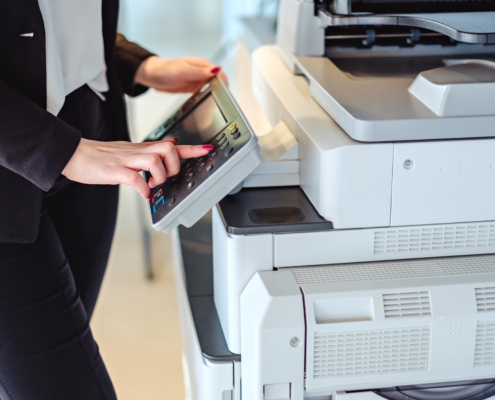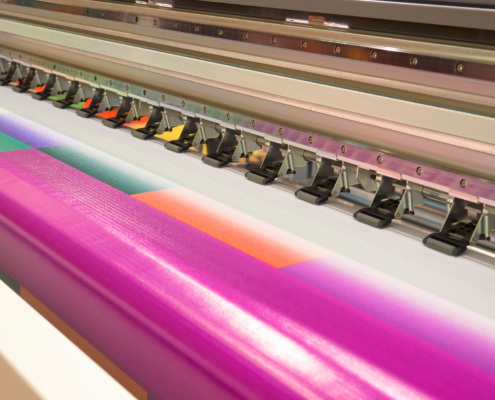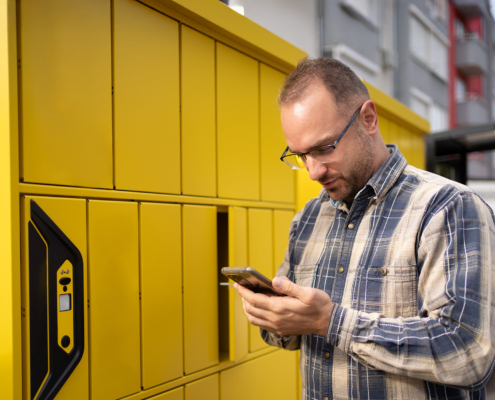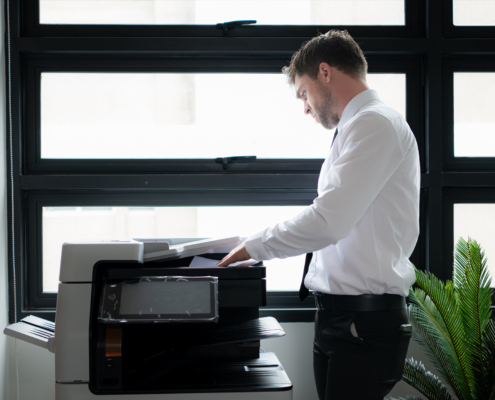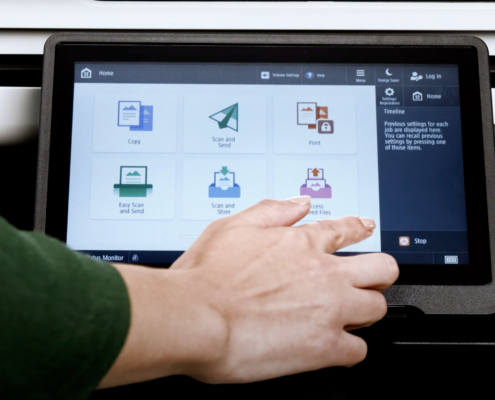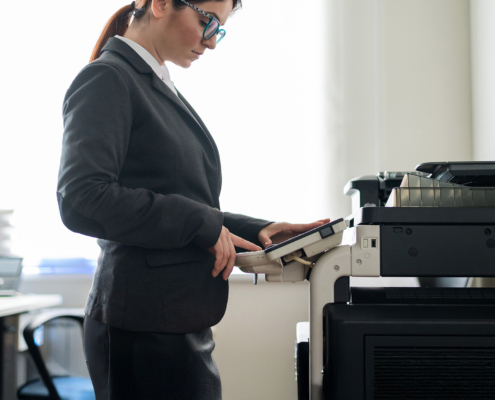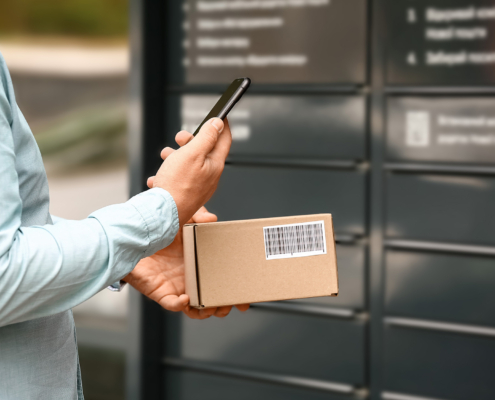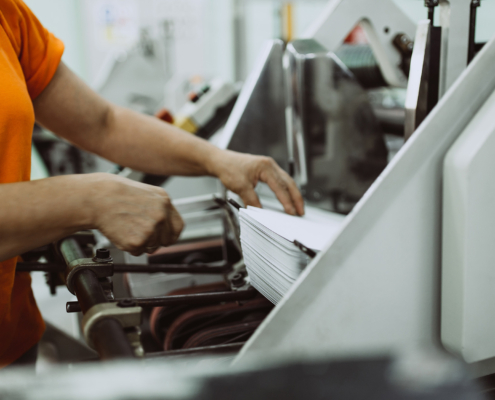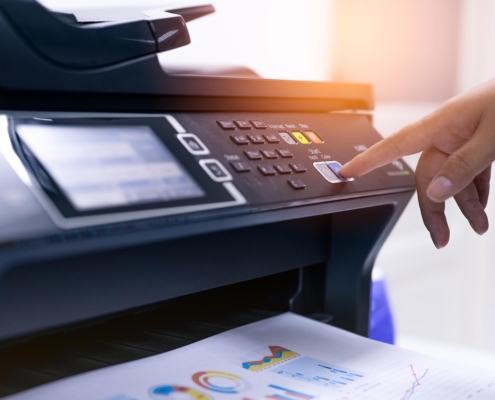 https://sosny.com/wp-content/uploads/2025/06/Person-using-multifunction-printer.jpg
1250
2000
Abstrakt Marketing
/wp-content/uploads/2024/04/SOS-Logo-Color-New.png
Abstrakt Marketing2025-06-24 16:01:462025-07-08 20:27:23Top Features of Kyocera Multifunction Printers
https://sosny.com/wp-content/uploads/2025/06/Person-using-multifunction-printer.jpg
1250
2000
Abstrakt Marketing
/wp-content/uploads/2024/04/SOS-Logo-Color-New.png
Abstrakt Marketing2025-06-24 16:01:462025-07-08 20:27:23Top Features of Kyocera Multifunction PrintersTraditional Printing, Sustainable Printing, and the Environment: What You Need to Know
Every day, businesses around the world rely on printing to get things done. However, have you ever stopped to consider the environmental cost of all those printed pages? From energy consumption to paper waste, traditional printing practices contribute significantly to carbon footprints.
It’s not all bad news, though—by making a few adjustments, companies can switch to sustainable printing practices that help reduce their environmental impact. Let’s dive into how traditional printing stacks up against more eco-friendly alternatives.
The Environmental Toll of Traditional Printing
Before we discuss the solutions, it’s important to understand the environmental costs associated with traditional printing practices. Here are the three major ways that conventional printing impacts the environment:
Energy Use and Carbon Footprint
Traditional printers and copiers consume a significant amount of energy. Every time a page is printed, energy is required to run the machine, and the more machines a business uses, the more electricity is consumed. In many areas, this electricity is generated from fossil fuels, which contributes to greenhouse gas emissions and increases a company’s carbon footprint. This adds up quickly if your office has multiple printers running all day.
Paper Production and Waste
Did you know that paper production is one of the biggest contributors to deforestation? Manufacturing paper requires cutting down trees and using a lot of water and energy. Not to mention, once paper is used for printing, it often ends up in the trash or landfill. According to the Environmental Protection Agency (EPA), paper accounts for about 25% of landfill waste in the U.S. So, businesses that frequently print documents contribute to the destruction of forests and the growing waste problem.
Ink and Chemical Waste
Traditional printing involves ink, which can be harmful to the environment if disposed of improperly. Conventional ink contains chemicals and solvents that can contaminate soil and water if not disposed of properly. The ink cartridges themselves, if not recycled, add to the burden of plastic waste in landfills.
Why Sustainable Printing Practices Matter
Now that we understand the impact of traditional printing, let’s take a closer look at why shifting to eco-friendly printing practices is so important.
Reducing Waste and Resource Consumption
Sustainable printing practices aim to use fewer resources—namely paper, energy, and ink—while minimizing the amount of waste produced. Switching to eco-friendly alternatives reduces the burden on landfills, conserves forests, and decreases overall resource consumption.
Cost Savings for Your Business
In addition to benefiting the environment, sustainable printing practices also lead to cost savings for your business. By printing less, using energy-efficient machines, and opting for environmentally-friendly ink, companies can cut down on material and energy costs. These savings add up over time, making it a win-win for both the environment and your bottom line.
Enhancing Your Brand Image
Consumers today are more environmentally conscious than ever before, and they tend to support businesses that show a commitment to sustainability. By adopting sustainable printing practices, your company can boost its brand image and attract environmentally-conscious customers.
Sustainable Printing Solutions and Their Environmental Benefits
Now, let’s examine the specific features and technologies that can help reduce the environmental impact of your printing operations.
Duplex Printing (Double-Sided Printing)
One of the simplest and most effective ways to reduce paper consumption is duplex printing, which allows you to print on both sides of a page. This can reduce paper use by 50%, making it a highly efficient option for any business that prints frequently. By using duplex printing, you help conserve paper and minimize waste, significantly lowering your environmental footprint.
Energy-Saving Modes
Modern printers come equipped with energy-saving modes that help reduce energy consumption when the printer is idle. These modes automatically power down the printer after a certain amount of inactivity, ensuring that energy is only used when necessary. Many energy-efficient printers also meet Energy Star certification standards, which means they use less energy without compromising performance.
Eco-Friendly Ink Options
The ink used in traditional printing processes can significantly impact the environment. Many printers today offer eco-friendly ink alternatives, such as soy-based or water-based inks. These inks are biodegradable, contain fewer harmful chemicals, and are less toxic than traditional petroleum-based inks. Opting for printers that use eco-friendly ink options helps reduce the environmental footprint of your printing operations.
Recycled Paper
Recycled paper is an excellent sustainable alternative to traditional paper. It’s made from post-consumer waste, which reduces the need for virgin wood pulp and conserves trees. By switching to recycled paper, businesses can significantly reduce their impact on forests and minimize waste sent to landfills.
Print Management Software
Another key aspect of sustainable printing is print management software, which helps organizations track and control printing activities. This software can monitor how much paper and ink each employee uses, allowing businesses to identify areas where they can cut back. It also enables businesses to enforce rules like duplex printing and restrict color printing, which uses more ink. By monitoring and optimizing your print practices, you can reduce waste and save money.
Looking to reduce your environmental footprint even further? Consider upgrading your office with refurbished or reused printers.
How to Transition to Sustainable Printing
Making the transition to sustainable printing doesn’t have to be difficult. Here are some simple steps that any business can take:
Step 1: Audit Your Printing Practices
The first step to transitioning to sustainable printing is evaluating your current practices. Take note of how much paper and ink your business uses, how often employees print, and whether you’re using energy-efficient printers. Conducting a print audit can identify areas where you can reduce waste and consumption.
Step 2: Invest in Energy-Efficient Printers
Next, consider upgrading to energy-efficient printers with energy-saving modes designed to reduce power consumption. Look for printers that are Energy Star certified, as these machines are proven to use less energy while maintaining high-quality performance.
Step 3: Implement Sustainable Printing Policies
Create and enforce sustainable printing policies within your organization. Encourage employees to print only when necessary and promote the use of duplex printing and recycled paper. With print management software, you can track employees’ printing habits and enforce sustainable policies more effectively.
Step 4: Recycle Old Printing Equipment
As you replace old printers with more energy-efficient models, be sure to recycle your outdated equipment properly. Many electronics manufacturers offer recycling programs, which keeps old machines out of landfills and ensure that valuable materials are reused.
Eco-Friendly Printing: Small Changes for a Big Impact
Switching from traditional printing to sustainable printing practices is an easy but effective way to reduce your company’s carbon footprint. By implementing duplex printing, using eco-friendly inks, and investing in energy-efficient machines, you can reduce paper and ink waste, lower your energy consumption, and save money.
In addition to helping the environment, sustainable printing practices can improve your company’s brand image and attract customers who are looking for environmentally-conscious businesses. Start making the shift today, and see how small changes in your printing practices can have a big impact on both the environment and your business.
If you’re ready to make the transition to more sustainable printing practices, contact Superior Office Solutions to explore eco-friendly printing solutions for your business.

